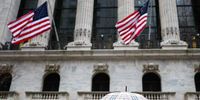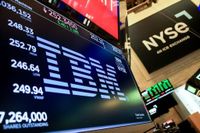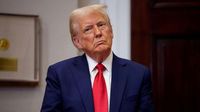Worries over the economic effects of the global trade war are further sapping liquidity in US stocks, creating a headache for institutional investors that could also boost volatility in broader markets. Liquidity — the ease of buying or selling an asset without affecting its price — has been dwindling for years due to factors such as tighter regulations and the rise of algorithmic trading. Tariff concerns have introduced a new wrinkle, stoking gyrations in individual stocks that have made it harder for institutions to trade in size.
On March 26, 2025, Dow Jones futures were little changed early in the morning, along with S&P 500 futures and Nasdaq futures. Key economic data released before the market open will provide an early signal as to whether Trump tariffs and tariff uncertainty are affecting business investment. The stock market rally attempt edged up the previous day after significant gains on Monday, driven by news related to Trump tariffs, particularly among megacap stocks.
As the S&P 500 tries to extend its three-day winning streak, the market is watching closely for any signs of how the trade situation could evolve. On this day, the Dow, Nasdaq, and S&P 500 look to consolidate after stocks hit a three-week high. Meanwhile, GameStop shares popped on March 26, reflecting investor interest in the volatile stock.
Data on durable-goods orders is due later in the morning, which could further influence market sentiment. The tech sector has seen a rebound, with the so-called Magnificent Seven — a group of prominent technology stocks — rising 6.2% in the last three sessions, marking their strongest performance since November. However, investors remain cautious ahead of April 2, when the White House is expected to announce new tariffs.
Consumer and business sentiment has been dented by the White House’s rapidly evolving tariff threats, as survey data indicates. Yet, other indicators suggest that the U.S. economy remains on strong footing, providing a mixed outlook for investors. Treasury yields were little changed, with the yield on the benchmark 10-year Treasury note settling at 4.307% on March 25.
In recent trading, stock futures were muted, and the market is closely monitoring various corporate earnings reports alongside the durable-goods data. Dollar Tree gained after striking a $1 billion deal to sell Family Dollar, showcasing some activity in the retail sector amidst broader market fluctuations.
In commodity markets, copper futures climbed more than 1% after settling at a record the day before, even as the White House has threatened tariffs on copper imports. Mixed results were seen overseas, with indexes falling across Europe while a rally in Nintendo shares helped drive Japan's Nikkei 225 higher.
As market participants digest these developments, the interplay between trade policies, economic data, and corporate performance will be crucial in shaping the investment landscape in the days ahead. The volatility induced by tariff uncertainties is likely to keep investors on their toes, as they navigate the complexities of the current economic climate.




